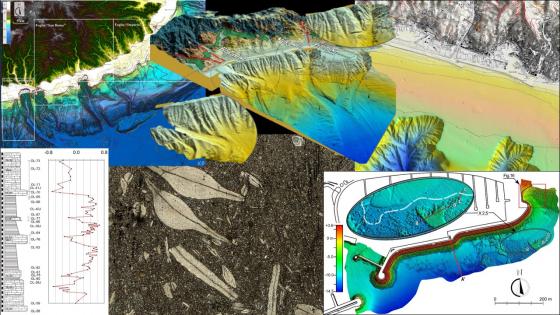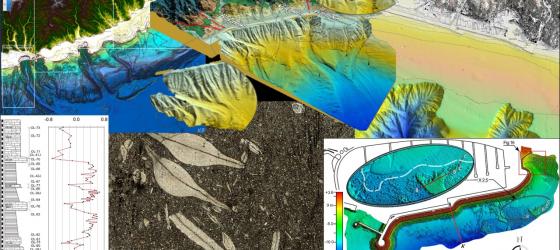The Earth's surface is the place where it is possible to observe the main processes of interaction between the atmosphere, the geosphere and the biosphere. The processes that regulate this complex system are central research topics in the field of Geological Sciences and are declined both in basic research and in applied research areas. The Earth's surface is the place where all time intervals are defined, including the Anthropocene, defined as the period of time in which human impacts on the Earth and its geological record predominate over natural processes. Research applied to the study of these processes contributes to the enhancement of the emergencies of the territory and its protection, to the pursuit of sustainable development, to the understanding of the evolution of environmental factors in relation to anthropic forces. The study of climate change finds abundant analogues in the stratigraphic and paleontological register where applied research is directed to simulate future climate scenarios. Specifically, the most active realities in this field are concentrated on the following four topics:
1. Geomorphology and quaternary geology: the research activity focuses on the analysis of the shapes and processes of coastal, fluvial, periglacial and slope modeling, taking into consideration the interaction with changes and impacts of anthropic origin. The studies are based on the implementation of multitemporal and multiscale GIS analyzes and on the application of numerical models. The main objectives include the characterization of geomorphological dynamics (danger/risk) for forecasting purposes to support territorial planning, the conservation and enhancement of the geomorphological heritage. Other significant research activities concern geoarchaeology and the stratigraphic study of Quaternary deposits, for the reconstruction of climatic and environmental variations. (P. Brandolini, F. Faccini, A. Mandarino, I. Rellini)
2. Marine geology: the research is conducted through studies on the stratigraphic architecture and the morpho-structural structure of the continental margins of the Italian seas as well as some sectors of the Ross Sea (Antarctica). Their cartographic representation is accompanied by specific studies on the most critical marine and coastal areas for geo-environmental risks (erosion and instability) connected both to climatic variations and to extraordinary events or related to active tectonics (Ligurian Sea, Ionian Sea of Calabria and Adriatic southern).
The studies were carried out within research projects and national and international collaborations (e.g.; CARG-ISPRA, EMODnet-Geology, SEALEX, S-P-HERITAGE, METIQ, PNRA; Universities of Milan, Pavia, Pisa, Rome, Palermo, Catania, Sorbonne, Côte d'Azur). (P. Brandolini, L. Crispini, D. Morelli, M. Locatelli)
3. Stratigraphy and Paleontology: Paleontological research mainly focuses on the paleoclimatic and paleoenvironmental reconstruction of depositional sequences geochronologically attributable to intervals of major climatic upheavals to analyze in detail the response of marine organisms to these drastic temperature fluctuations. The taxonomic and stratigraphic focus is concentrated on the superficial marine paleogenic sequences characterized by autotrophic faunas (macroforaminifera and corals), but in other respects it ranges over the entire Cenozoic and includes the study of modern faunas as paleobiological indicators. (A. Briguglio, M. Piazza)

